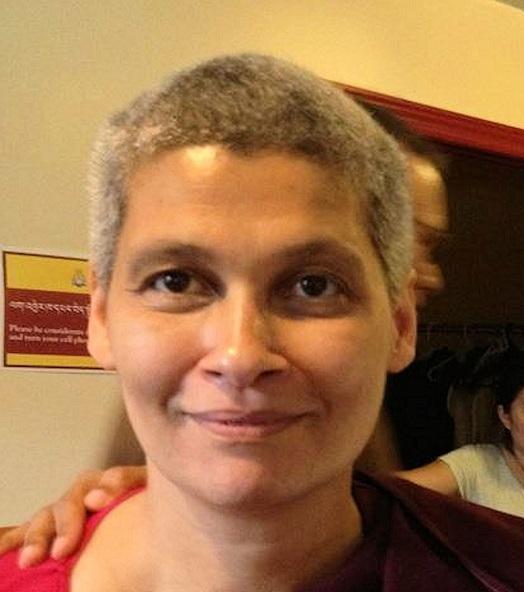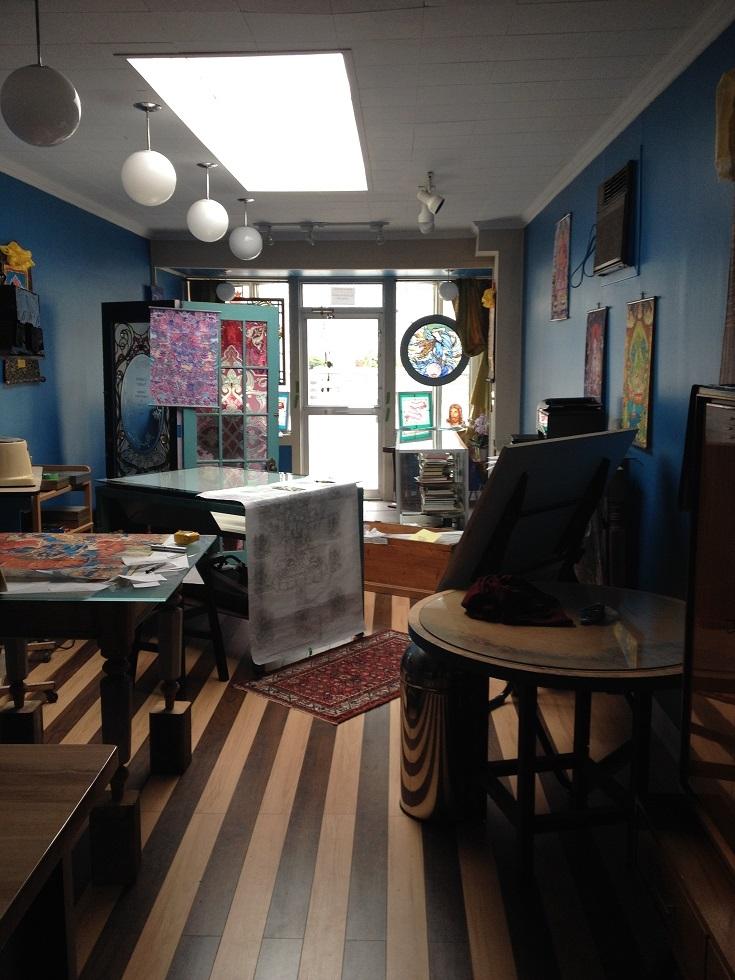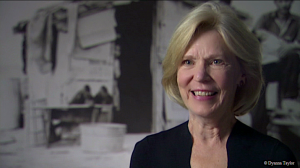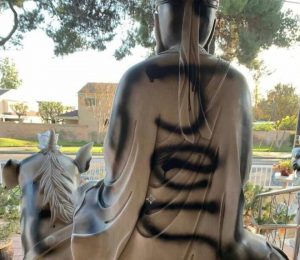“Sacred art is created in order to awaken our experience of the true reality. It should not remain unattended on a wall or shelf. We should interact with sacred art. Make offerings to sacred art. Pray and meditate in front of sacred art.
In Tibetan Buddhism, sacred art is one of nirmanakaya’s four manifestational powers. It represents buddhas, deities, and masters—each with a unique identity understood to arise from an unformulated spatiality.
In some cases, it’s is [sic] more than a devotee’s support. It bestows liberation on sight. And in some instances, it is self-arising and not man-made. In Tibet there are beloved stories of speaking statues and paintings.” – Lama Yeshe Wangmo (Jnanasukha)
Outside the temple at Dongyu Gatsal Ling Nunnery in Himachal Pradesh, northern India, a resident Tibetan Buddhist nun gazes at the stained-glass, hand-painted image of the female deity Tara adorning the temple wall. This image, which took over a year to create, arrived at the nunnery in a crate shipped thousands of miles—all the way from Toronto, in Canada.
This breathtakingly beautiful and detailed work of art originated in Yulokod Studios—the workshop of Tsunma Jamyang Donma, a Canadian Tibetan-Buddhist female monastic. Located in Cambridge, Ontario, this single-artist studio has produced more than 25 exquisite works of art, which adorn such diverse places as traditional Buddhist temples and nunneries in Asia and North America, personal shrines in the mountains of California, and Reiki practitioners’ offices in New York.
What Tsunma Jamyang Donma has accomplished is to take the Western tradition of ecclesiastical glass painting and render it Buddhist. Remarkably, Tsunma never intended to create objects of devotion for traditional Tibetan Buddhist practice. Not yet having encountered Buddhism, as a teenager she began training in ecclesiastical glass painting with the renowned Robert McCausland Limited in Toronto. One of the first women to be trained in this rare discipline, she is among only a few hundred such artisans remaining today.
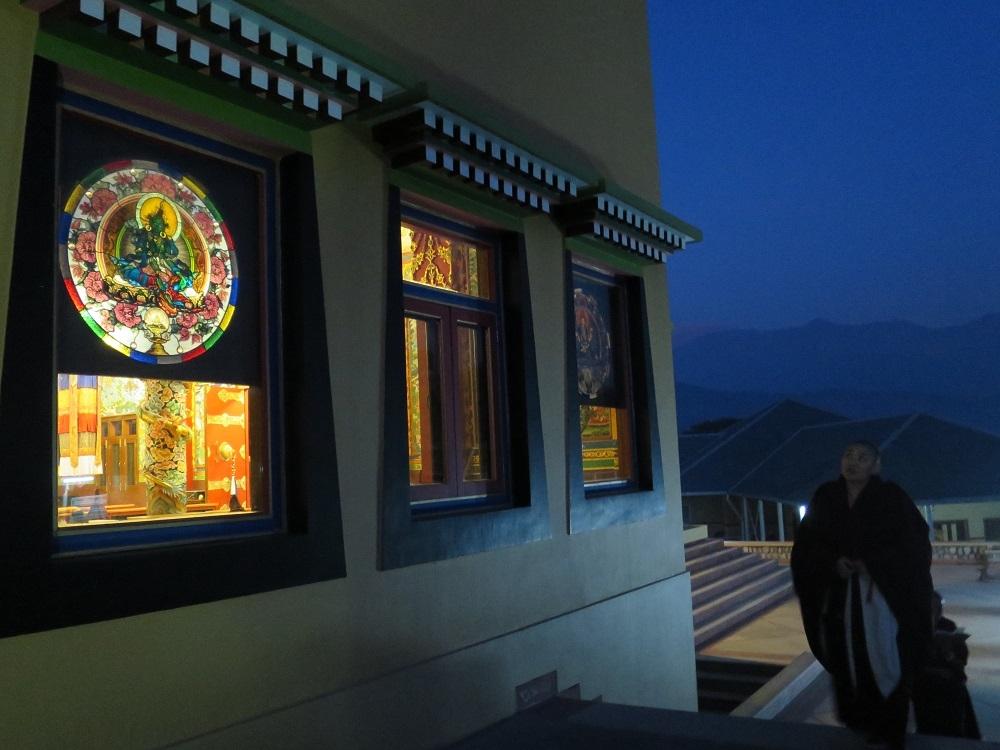
Tsunma’s training included working at several other stained glass studios in Toronto, and towards the end, she decided to open her own. After running the studio for seven years, however, she left to devote herself entirely to her Tibetan Buddhist practice. She met her first lama, Venerable Khenpo Sonam Tobgyal Rinpoche of Riwoche Temple in Kham, Tibet, in 1989. Rinpoche wanted to establish a temple in Canada and sought her assistance, so Tsunma ceased her art practice in order to devote herself full time to Buddhist activities, eventually taking ordination in 1994.
Then Buddhism led her to take up art once again, through a direct experience with Green Tara: “[I]t was like one thousand little girls laughing. It was pure bliss,” she says. Tsunma felt ethereal joy, in what she describes as the energy of Tara entering her heart and expanding its boundaries. What followed was a commitment to offer opportunities to others to experience that joy as well. She thus felt compelled to revisit her previous art training, this time to create images of Buddhas and bodhisattvas as aids to Buddhist awakening.
This eventually led to the creation of Yulokod Studios, named after Tara’s pure realm. Tara, she explains, is the mother of all Buddhas, manifesting out of the tears of Chenrezig (or in Sanskrit, Avalokiteshvara)—the bodhisattva of compassion—for the sufferings of the world.
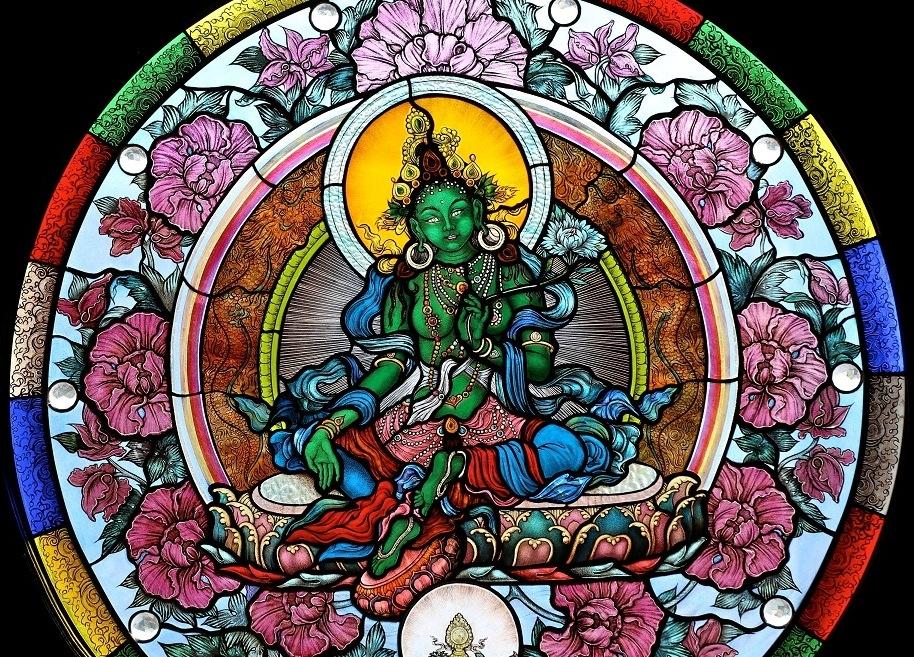
What is perhaps most remarkable about this artistic evolution is that, unlike her intense training in ecclesiastical glass painting, Tsunma never formally trained in painting traditional Tibetan thangkas. While she credits many mentors for guiding her in the learning process, Tsunma is actually self-taught in this Tibetan sacred art form. Yet she maintains specific measurements and instructions authentic to several thangka schools in her work.
Most thangkas Tsunma Jamyang Donma creates are used for clients’ personal Tibetan Buddhist practice, and images range from Green Tara to Chenrezig, to Guru Rinpoche, to the Medicine Buddha. When she first meets a client, she ascertains what specific deity or image the client would like for the thangka and also how the client plans to use it—for a particular Green Tara practice, for example.
She then creates a visual archive of that deity as it appears in different representations across the disciplines of Buddhist painting, sculpture, drawing, and photography. Listening carefully to the client’s reactions and remarks, Tsunma takes notes and begins to create a sketch that will become the actual thangka.
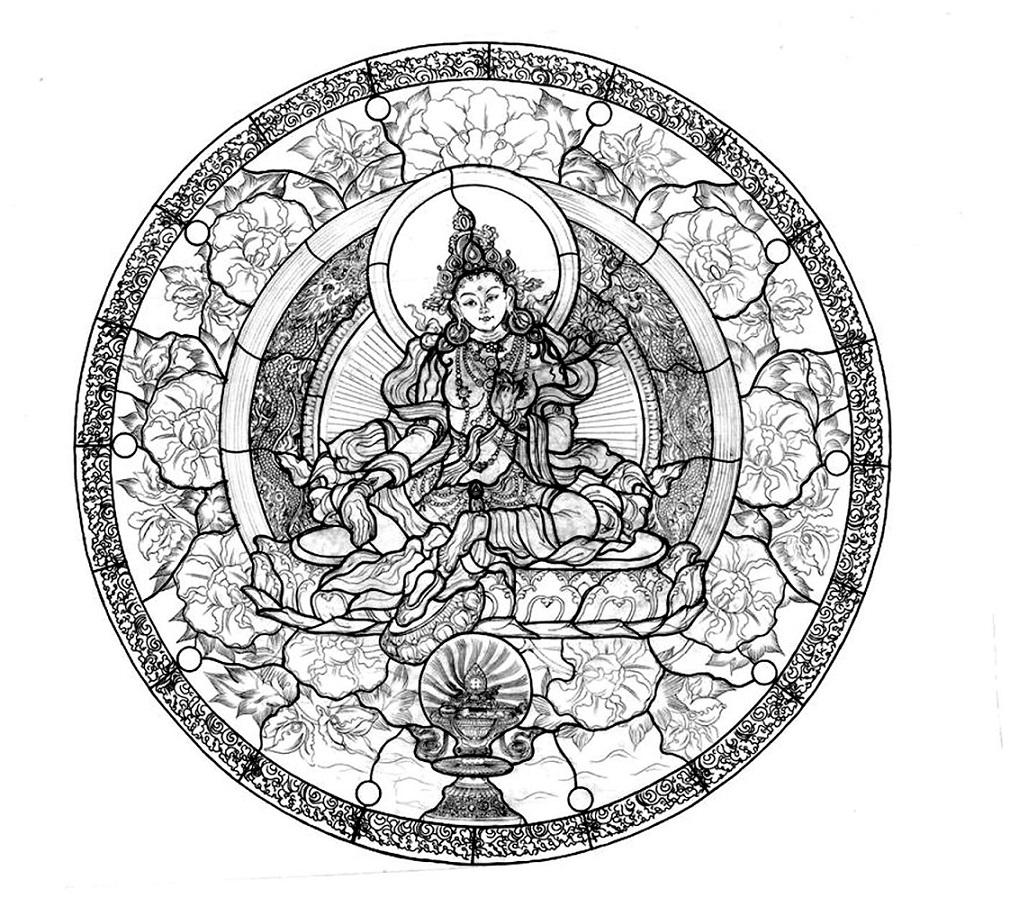
As such, Tsunma aspires to be a conduit for each client’s personal practice. Each client has a personal relationship with the deity of the thangka, and through practice gains an intimacy with its energy: “Conjuring up, being in communion with the essence of a deity, and dwelling in that essence is a form of practice in itself,” she says.
The meticulousness and precision of the process can be said to be similar to the Tibetan sacred art form of sand mandala construction. Yet Tsunma’s art practice, while it does portray Tibetan deities, remains rooted in the ecclesiastical glass painting in which she trained. In this way we can say that she has created a hybrid of East and West—perhaps even a new and distinct form of Buddhist art altogether.
After the client approves the sketch, the glass for the thangka is cut and ground to perfection. Then the line work is hand painted and the paint fired. Once the glass is out of the kiln, shading is applied and removed with brushes and a needle to produce a highly detailed, photographic effect, in multiple layers, each of which is fired separately.
Next, delicate color hues are painted with transparent glass enamels. Colors are often layered to achieve delicate transitions, as in a rainbow. The glass is fired at each stage, sometimes four to five times. Finally, the individual pieces are wrapped in copper. The sections are then laid out and soldered together, and the thangka is framed in brass or zinc and shipped to the client.
For Tsunma Jamyang Donma, the most important aspect of her work is good motivation. The most meaningful moment in her art practice was when Nyoshul Khen Rinpoche, a Dzogchen master from Kham in eastern Tibet, offered her this observation: “Even making beautiful stained-glass windows is the act of a bodhisattva if done with proper motivation.” To Tsunma, this meant that even seemingly mundane work can be sacred.
Tsunma Jamyang Donma both begins and ends the day at Yulokod Studios with Buddhist meditation. The acts of making art and meditating merge into one, affording her the opportunity to practice “Pure View.” Tsunma explains “Pure View” as seeing the world as a Buddha realm, where everything is experienced as the Buddha’s blessing. The goal is to realize a sacred view of life and to dissolve our habitual, dualistic way of seeing. There is then no separation of art and meditation. “You are never outside of the practice. The practice does not ever really stop,” she says.
By creating Buddhist thangkas using the traditional Western art form of ecclesiastical glass painting, Tsunma Jamyang Donma is bringing a gift to the world that is both breaking boundaries and helping the Dharma to spread.
See more
Our New Lady Yeshe Tsogyal Thangka—Update (Jnanasukha)
Yulokod Studios




